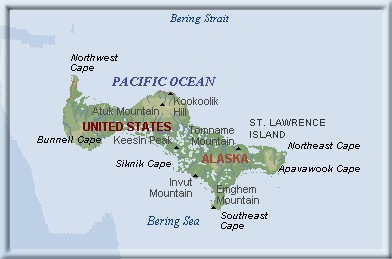 |
| Kids know how to keep it cool during heat wave- the fountains of Centennial Olympic Park in downtown Atlanta - photo courtesy of Channel 5 |
Having just returned from my second trip up to arctic Alaska, I'm not happy camper about the weather situation here in Georgia this summer into early fall.
A high pressure dome has been sitting over the southeast, including Atlanta, for the last month - paradoxically, no rain but over 80% humidity, so very muggy and hot - Atlanta had temperatures in the mid to high 90s for over 15 days in a row in September; it's has 'cooled' off to mid-80s for October. Southern heat is a real 'thing' pressing down on you - you feel as though you are walking through molasses and all your energy drains out through your toes.
I've been thinking a lot since I returned from Nome about the hauntingly similar geography of the Alaskan Arctic tundra and the highlands of Scotland. The landscape I've seen thus far around Savoonga is comfortably resonant of perhaps its near sister-island halfway around the world, at nearly the same latitude. Even if not the highest peaks, both islands have formidable crags scattered across the interior with some year round snow patches, glacial streams of Savoonga and brae burns (pretty streamlets in the highlands) of Scotland run to the sea in great wet spots (the famous peat of Scotland and Ireland are but bogs dried by time and pressure).
 |
| St. Lawrence Island - Savoonga is located at the point labeled Kookoolik Hill. Savoonga is 63 deg 41 min North and 170 deg West |
 |
| Kitnik talus field, St. Lawrence Island, AK Photo by 'Eric' at EpicTrip |
 |
| Beinn Deag Mor of Scottish Highlands |
The land, both Beringia and Scotland, is the dawn of time exposed - developing not long after, geologically speaking, the Precambrian shield, hardly clothed at all with much plant life to speak of.... but that which there is displays beautiful hues in the fall - one would be hard pressed to differentiate tundra willow, alder, birch and berries from moorish heather at that time of year, even the shaggy beasts seem to share some characteristics.
 |
| Fog in the Highlands,fairly typical day - notice the red heather on the moor |
Wild highland cattle |
 |
| Cliffs of Moher of Scottish Highlands |
Left: Ovibos moschatus - muskoxen common to Seward peninsula
 |
| Puffins on cliffs of St Lawrence Island |
Even the summers of that better half of the United Kingdom are similar to St Lawrence Island --typical daily summer forecast in Scotland: "most cloudy, high of 45 degrees, occasional bright spots "(bright spots were never sunshine, just thinner cloud cover - if temperatures reached 70 degrees,it was a heat wave and people dropped like flies)
You may have guessed by now I have a strong connection to this place - my father's ancestors are of Scotland - the Dees on his mother's side from the River Dee (inland from Peterhead) and the lowland Kerrs of my grandfather Carr (variant spelling) may have dwelled further to the south, perilously close to Britain. Carr: a word in itself that means a certain type of wetland, alders, birches and willows. Hmmm....no wonder I always feel most at home near water!
Both islands surrounded by fiercely capricious oceans - my father, who was a man of the sea his whole life, told me that when he was out there building some of the first offshore oil rigs in the North Sea, not uncommon to see waves reaching 80 feet high.
But in the Arctic, when the 'gales of November come blowing' (tip of the hat to Gordon Lightfoot who paid great homage to men of the sea), it is time to put aside similarities. As I write this, it has been snowing lightly but steadily in Savoonga for several days and there is not much change in the forecast. I am probably not well-prepared for this and will have to rely on the good people of the village to keep me from making really stupid mistakes and getting lost or hurt. I may tie a line from my house to the clinic.
 |
| This is actually a winter scene from Gambell, village to the west of Savoonga. |
Somehow I don't think a polartec vest from
L. L. Bean is going to be all that effective.



No comments:
Post a Comment